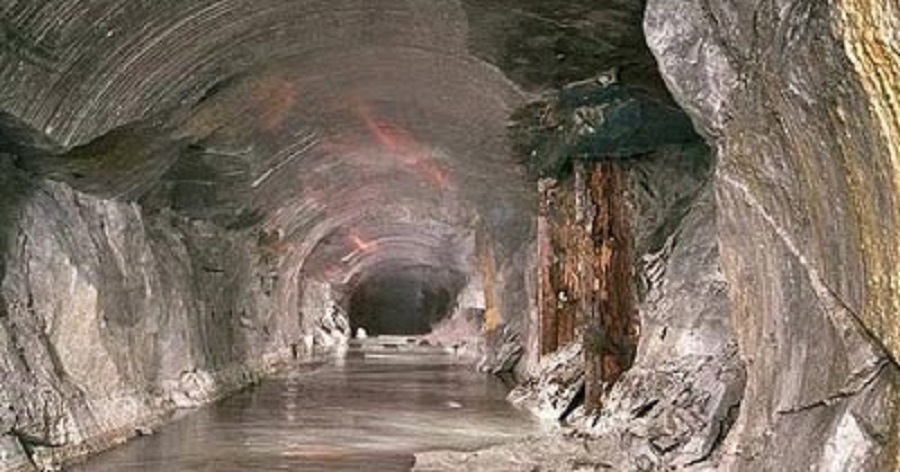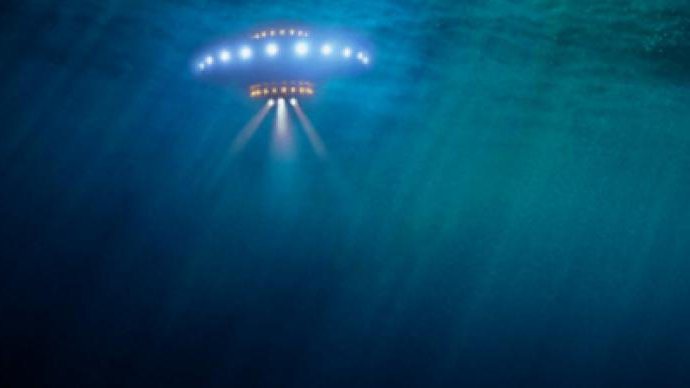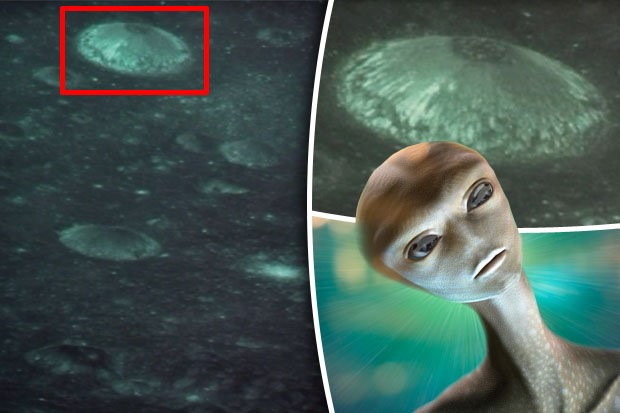Are we alone in the Universe? Is there any intelligence in this immensity? If so, what chances we have to get in touch with it? Is it more advanced than us? How much? They know about our existence? What would be the consequences for the future of the earth civilization?
Some are convinced that already have definitive truths about this topic, despite the fact that they know only superficially or none. I therefore propose to re-examine some arguments we have, at present, in this regard.
US National Security Agency is spying the aliens
On April 23, 2011, world media broadcasted the news that NSA (National Security Agency) has developed algorithms to decipher the messages received in the last decades from extraterrestrial civilizations, through the SETI (Search for Extraterrestrial Intelligence). This is, therefore, a top secret US military agency that can listen, record and decipher virtually any conversation from any corner of the world is interested in extraterrestrial civilizations.
One of the documents published by the NSA, named “Key to extraterrestrial messages” is authored by Dr. Howard H. Campaigne and contains a series of 29 messages received from outer space through SETI program. It is also shown the construction of a decryption algorithm. An analyst commented that, “This document confirms not only the existence of aliens, but also that the US government received transmissions from a civilization outside our solar system”.
NSA interest in SETI programs is not recent. In 1989, a sub-committee of the SETI commitee of International Academy of Astronautics has developed a document called the Declaration of Principles regarding activities following the detection of extraterrestrial intelligence, also called the SETI Post-Detection Protocol.
It included the measures that should be taken if scientific evidence would be achieved , absolutely safe, of the existence of extraterrestrial civilizations. In the protocol and its annexes shows that, if a a message from a certain unearthly civilization would be received, the discoverer will inform other participants in the SETI project type, for independent observations and monitoring. Only after a general confirmation, will be made an public announcement for the authorities too. The answer towards the discovered intelligence will be then discussed and approved by the UN General Assembly.
NSA experts were not slow to denounce this version of the protocol as foolish, saying, among other things, that to a cosmic advanced race, we could be a form of primitive life, like guinea pig or culinary delicacies.
But, above all, NSA considered totally unacceptable for the United Nations or an international group of astronomers, to represent Earth in communication with other worlds. This right should belong only to the US President…
SETI projects for the search of extraterrestrial intelligences have begun in 1960. In time, they have become an international program with a budget of several million dollars, involving thousands of specialists and the largest radio telescopes in the world. Until recently it was known that were detected only occasionally, short bursts, non-repeatable, radio signals from space.
A famous example was the signal “Wow” registered on August 15, 1977, by Jerry Ehman using Ohio State University telescope. But, since then, the astronomers have never detected nothing similar in that part of the sky.
SETI projects were financially supported to a certain point, by the US government, and then by private funds, but on April 22, 2011 (coincidence?), the most important component SETI, the one connected to the radio telescopes network ATA (Allen Telescope Array ) had to stop the work due to lack of funds.
Fermi’s paradox – “where are they?”
From Frank Drake’s equation results that only in our galaxy – the Milky Way – there were dozens or hundreds of civilizations. Some of them could be very old. Even with the current technologies, earthlings could colonize and explore the galaxy in a few million years at most. So, naturally, all ancient civilizations could do the same, millions of years before us.
So, they should be here now, to manifest through “miracles” by phenomena that can not be explained either as natural or as produced by humans, and some of these miracles should have cosmic proportions. However, we don’t see more than a “gigantic silence”. What is the cause?
This contradiction is called in the literature devoted to extraterrestrial contacts, Fermi’s paradox, as tradition claims that the physicist Enrico Fermi was the first, in the forties, who asked the rhetoric question regarding aliens “Should they be here; where are they?”.
Thus, are we alone in the Universe? This view, which rallied many scientists, has been also called the solipsistic hypothesis. The moderate proponents of this hypothesis recognize that the Universe is too high and the probability to be the only civilization in it is small. But they add that we are very far from each other, so, unable to connect. What do we mean by life?
To attempt an answer to the Fermi’s paradox, it is useful to divide the problem into smaller ones. The first will be the calculation of the chance that in the Universe exist life beyond Earth. In turn, this implies to define what we mean by life.
Today, science associate the notion of living being to some very large molecules , very complex and with a huge variety, which provides some fundamental features: metabolism, growth, multiplication, initiative to move etc. Carbon is the only element that enables the creation of such molecules made of stable chains of thousands of atoms.
True, much has been said about other lifes too, for example, the developed ammonia oceans instead of water at temperatures much lower than the earthly. A special place takes the life hypothesis based on silicon, silicon is – besides carbon – the only chemical element capable of forming long chains and complex molecules.
If, however, the oxygen combined with the carbon give carbon dioxide, the same reaction with silicon leads to silicon dioxide, so, silicon creatures should expire… sand. The temperature at which the silicon dioxide becomes gas, silicon long chains get apart. Silicon reactions are less energy efficient than those of carbon. In addition, in the cosmos has not been found silicon compounds similar in complexity to those of carbon.
Leon Lederman, Nobel laureate in physics, speculated in 2000 that special forms of life or intelligence, could exist in some special areas of the Universe too, such as neutron stars, extremely dense cores of some former stars. In such areas processes occur millions of times faster than the biological world.
It would be unthinkable, he said, that the reactions of these stars give rise to complex structures endowed with intelligence, an intelligence that we could hardly get in touch, inter alia because in an earthly hour they would drain the equivalent of thousands of years.
But going on the same thread of reasoning, why could not exist life – and even intelligence – based on totally different forms of matter than we know? Suppose, for example, the hypothetical substrate ethereal vibrations of the Universe? Of course, such assumptions seem insane today and we can not accept them. But why not let the imagination run wild and sometimes beyond the banal and tangible?
Here, however, that “carbon life” can reserve surprises. For a long time it was considered that life can not exist without the six essential elements: carbon, hydrogen, nitrogen, oxygen, phosphorus and sulfur.
But in a press conference on 2 December 2010, NASA announced that the bottom sediments of Mono Lake, Yosemite National Park (California) was discovered “arsenic bacterium GFAJ-1” with five of these essentials but phosphorus is replaced by his cousin – similar but toxic – arsenic, even in its DNA chain, ie multiplying its foundation. Felisa Wolfe-Simon, NASA biochemist note that this finding shows that “life as we know it, could be much more flexible than generally assumed, or than we can imagine”.
How much life exists in the universe?
Astronomers identified in space – through spectroscopy, since three decades ago – tens of kinds of molecules that are the basic building blocks of carbonic life: water, carbon dioxide, formaldehyde, ammonia, acetaldehyde, methanol, benzene, etc. We have identified a first amino acid: glycine. If these compounds were detected at such a distance, it means that there are huge amounts.
On the seabed, were discovered bacteria that feel good at 200-2500C temperatures and pressures of 200 atmospheres; in Antarctica were found bacteria capable of replication at -700C or that, although 12 thousand years old, have been revived.
Experiments carried out in 1998 at the University of Berkeley (California) have shown that, at room temperature, the DNA molecule can withstand more than 35 years in vacuo, and at the temperature of the space could withstand indefinitely. It has been calculated that primitive life forms could travel thousands of years through space from one star to another, “infecting” all appropriate place.
We are interested primarily the earthly type life. Unfortunately, we have only one place where we can follow its evolution – here.
Earth was born about 4.6 billion years ago, same with our immediate neighbors. 4 billion years ago its surface was still a liquid magma ocean, permanent subject to meteoritic bombardment. The first solidified shell fragments, identified in Greenland and Australia and has over 3.8 billion years, already contain traces of primitive life. This has led many to argue that, whatever its origin, life will manifest in any place in the Universe, as soon as the conditions are met for it to be able to maintain and perpetuate.
Between the constant threat of ice ages and the greenhouse effect, earth’s biosphere has gone through watershed moments. Early on, in our planet’s atmosphere prevailed methane and carbon dioxide. Then, some bacteria and algae capable of photosynthesis changed composition of the atmosphere, releasing oxygen. Decreased the greenhouse effect and the temperature has dropped a lot. 2 billion years ago has installed even a first widespread ice age, from which, fortunately, we went out well.
But the Oxygen is deadly to any unprotected living organism. Only survived the bacteria that were coated with a suitable protective membrane. Some have learned to “breathe”. This process culminated 1.8 billion years ago, when there were nucleated cells called eukaryotes, who lived at first individually, and then in colonies.
About 800 million years ago, these colonies were transformed into multicellular beings. Through successive mutations, of them were born, 570 million years ago, animals with external skeleton, and then with internal skeleton. Their evolution was interrupted by several “mass extinctions” that had a more dynamic role in development, as well as many minor extinctions. Disasters were caused by enormous meteor, by the explosion of supernovae, can shift the Solar System through a cloud of cosmic dust etc.
Technological civilizations destroy themselves compulsory?
It took almost 4 billion years of uninterrupted evolution, of which only the last seventh beings we can call animals, because in the last million year, the man appear on Earth. 100-200 thousand years ago the Neanderthal human prevailed, about 50,000 years ago is spreading in the world the modern human: homo sapiens sapiens.
Finally, the accumulation of science and technology in the last few millennia, through libraries and schools, led in the 20th century, at that level of development that has been called “technological civilization”, ie the era of space travel, atomic energy, the Internet and cloning living beings. What next?
“Gigantic silence” of the cosmos could mean that technological civilizations compulsory disappear after a short time. Being the fall to Earth of a huge asteroid, a supernova explosion, or other yet unknown cosmic threats?
More likely is that a technological civilization might commit suicide. Already increased the carbon dioxide level in the atmosphere. So they got to see: melting glaciers, dry summers, storms of unprecedented violence. In over a century, the sea could cover the entire countries and finally, paradoxically, by blocking ocean currents, we might wake up in a new ice age.
Due to packaging and wastes (including chemical, nuclear, etc.), the Earth is about to become a huge garbage can. The accumulation of highly toxic chemical compounds may have, over time, unpredictable consequences. Genetic experiments after momentary advantages could be followed in other generations, by an irreversible degeneration of the human species. Or might create viruses for which there is no cure…
Dangers above are however negligible compared with those of a military nature. Carl Sagan appreciated, in 1983, that the probability of self-destruction of a civilization is greater as bigger its expansionist tendencies are, particularly to conquer the cosmos. He estimated that the chances for the survival of humanity are, in the 21st century, of 40%, and in long term, of 1%.
If 10% of the world’s existing nuclear arsenal would explode (out of a mistake, as a result of terrorist attacks etc.), very few people would survive (maybe none). But the great dangers mentioned above: nuclear weapons, genetic experiments etc. are inventions of the 20th century. 21st century science will find (in addition to many wonderful achievements) some more effective methods of destruction too, against which nuclear weapons or pandemics will seem children games. And if we survive these tests, 22 century will come, then 23 and so on, until the ”absolute weapon” will be dicovered…
Another explanation for the “giant silence” could be that a civilization that once has peaked, necessarily degenerates. There may be a genetic or a social degeneration caused by the carefree life. Frank Drake opinioned, for instance, in 1980 that maybe the colonize of the cosmos is not mandatory, as we were tempted to believe. How many civilizations are in our Galaxy?
It is estimated that, out of the more than 400 billion stars in our Galaxy, about a quarter have a sufficiently long life (minimum 5 billion years), probably three of four have planets and about a fifth ensures for these planets stable orbits for long time (I removed the double or triple stars ), which means about 15 billion “quiet” planetary systems .
About one tenth of all the stars are “third generation” so, have rocky planets such as Earth. A tenth of them is in the “ecosphere”, ie the distance from the central star which ensure that the surface water to maintain billions of years in the liquid state.
A planet out of five has appropriate dimensions of life ( a mass between 0.5 and 10 times that of Earth) with active volcanism and tectonics. Two planets out of three have nearly circular orbit with the axis inclination and the alternation of day and night acceptable for living beings with moderate variations of the seasons.
Within a radius of 54 years light around the Earth there are about 1000 stars, of which 46 very similar to the Sun. Until 15 June 2011, were already identified more than 562 planets around 150 stars. And Andrew Howard of the University of California, leader of a study conducted for five years at observatory WM Keck in Hawaii, studying 166 sun-like star, located in the “near”, said in late 2010: “Earth size planets are found in our galaxy like grains of sand on a beach – they are everywhere”. Many have favorable conditions of life.
In the Galaxy could be found about 20 million of these islands (other calculations in the literature give even values of 500 million). Apparently, the fact that are healthy for life is enough for them to bring forth life in some form. Estimated that about on one million planets, it will have the power and luck to reach the exuberance of the earth biosphere.
Probably on one tenth of these planets could occur, at the end of a few billion years of evolution, a being capable of abstract thinking, and again in case of ten, this person could build a “technological civilization”, ie cosmic ships, computers, nuclear reactors, etc. So, if our findings were correct, the galaxy has available space, at present, for about ten thousand technological civilization.
It is estimated that a large part of technological civilizations borned in the Galaxy will destroy themselves, will degenerate or may lose their appetite for progress, within a few centuries or millennia after reaching a comparable level to the one we have in present. Hopefully, I will not be considered overly optimistic if I think that a technological civilization out of ten is wise enough to survive the dangers of childhood and remain alive after millions of years…
This would mean a thousand surviving civilizations in our Galaxy. Among them are probably hundreds arose and exists today, and the rest will occur in the future.
Perhaps I was too optimistic. Maybe I did not take into account other factors as important: a not very busy area of the Galaxy, circular orbit of the Sun around the galactic center, the remoteness of the massive black holes of intense gamma-ray sources, a moon type companion etc.., which could reduce this number yet.
Recall, however, that we did the estimate just for our galaxy, and it is only one of about 100 billion galaxies, more or less similar to our accessible observations of the Universe. In addition, we have reason to believe that there are other worlds, perhapes “parallel” , perhapes in other states of aggregation of matter, etc.
Therefore, it is almost absolutely sure that there are other civilizations in the universe, some probably very old.





